|
Lesson 4
Good Roads and High Prices
|
| |
The year was 1905. A bold man drove his
new Cadillac from Fort Pierre to the Black Hills. His name was Peter
Norbeck (learn more about him in Unit 7). He was one of the first
people in South Dakota to believe in the automobile. Not everyone
was impressed. "The automobile is a plaything for idle minds
and hands," wrote one newspaper editor. It was a
"contrivance for killing people," he said.
|
|
Going across country like Norbeck did
was an adventure. Cars often broke down or got stuck in ruts or mud.
They scared the horses and livestock. They churned up dust and
splattered mud. People even wore special clothes for automobile
trips—a long coat, hat, and goggles. But cars were a new kind of
transportation. They were different from trains. People could travel
by themselves. They could go where they wanted. They were also
faster and more comfortable than horses. Soon many people were using
them. Others were building them. The Fawick Flyer was built right
here in South Dakota—in Sioux Falls. It was the first car with
four doors.
|
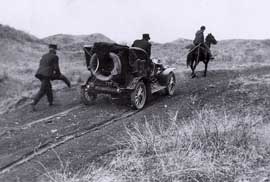
Photo courtesy of South Dakota State
Historical Society
|
|
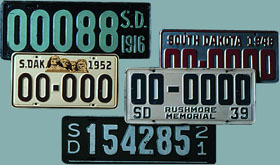
Photo courtesy of South Dakota State
Historical Society
|
Roads were a problem, though. Most were
rutted wagon trails. They were unmarked, and no one took care of
them. There were no highways and no paved roads. Soon people wanted
better places to drive. Joseph W. Parmley of Ipswich started working
for better roads. He and others joined what was called the Good
Roads movement. They talked to farmers and lawmakers about the
importance of roads. They said that good roads would be good for
business. In 1913, South Dakota
issued its first license plates. By
then, fourteen thousand automobiles were bumping their way across
the state on unpaved trails. A few years later, the state began to
build its first highways.
|
|
|
|
|
Meanwhile, the countries of Europe had
begun the First World War. It is called this now because by the end of
it almost the whole world was fighting. The United States stayed out
of it until 1917, but then it, too, joined the fighting. Thirty-two
thousand South Dakotans fought in this war. They were from all over
the state and from all backgrounds. Dakotas, Lakotas, and Nakotas,
and European immigrants joined the armed forces.
|
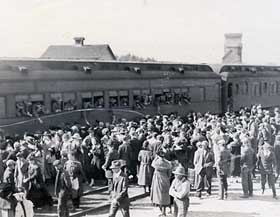
Photo courtesy of South Dakota State
Historical Society
|
|
|
|
|
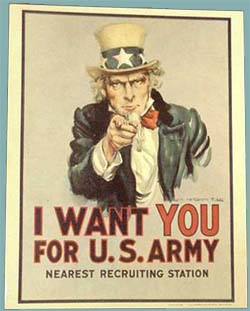
Photo courtesy of South Dakota State
Historical Society
|
Most of them went to Europe. Weapons had
changed since the army fought the American Indians. Bombs were now
dropped from airplanes. Tanks and submarines killed from a long way
away. Poison gases were used as weapons. People called it "The
Great War" or "The War to End All Wars." It made
Europe into a wasteland. But the warring countries still had to feed
their soldiers and their people. They bought food from the United
States.
|
|
|
|
|
Food was now in high
demand. Farmers and
ranchers got good prices for what they grew. South Dakota farmers
saw that they could make more money if they grew more food. They
borrowed money from banks to buy more land. Then the war ended.
Other countries quit buying so much food from the United States.
Prices for crops went down, and farmers and ranchers made less
money. They still had to pay taxes on the extra land they had
bought. Times became hard. Many farmers and ranchers could not repay
the banks. Many quit farming.
|
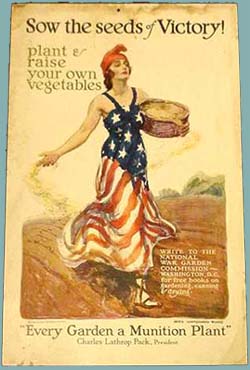
Photo courtesy of South Dakota State
Historical Society
|
Yet the war also brought
positive
changes. All American Indian men who had served during the war
became full citizens of the United States. Women earned the right to
vote in 1920 (learn more about this in Units 7 and 8). Shortly
thereafter, all Nakota, Lakota, and Dakota people also gained full citizenship. The 1920s began with hope and a new sense of freedom.
|
|
|
|
| Vocabulary |
|
| contrivance (n.),
an invention
demand (n.), the state of being wanted for use
|
issued (v.), put forth; sent out
positive (adj.), hopeful or to the good
|
|
|